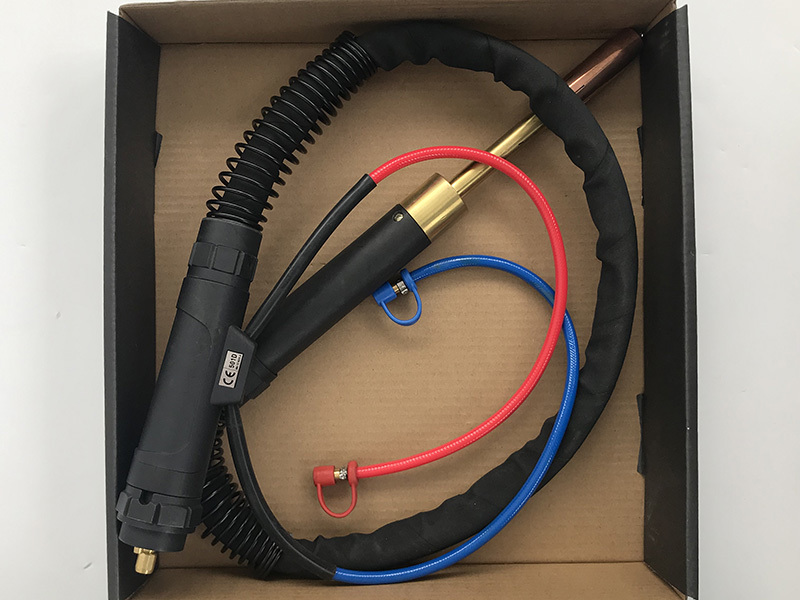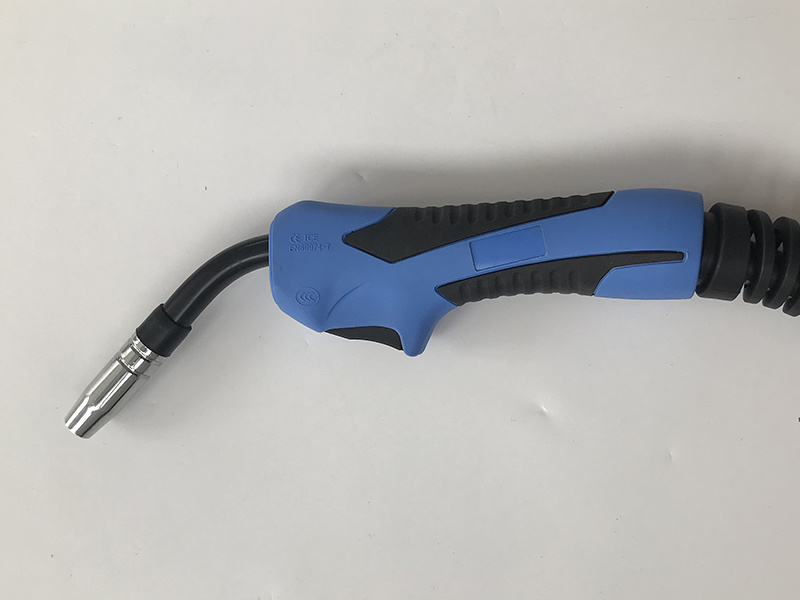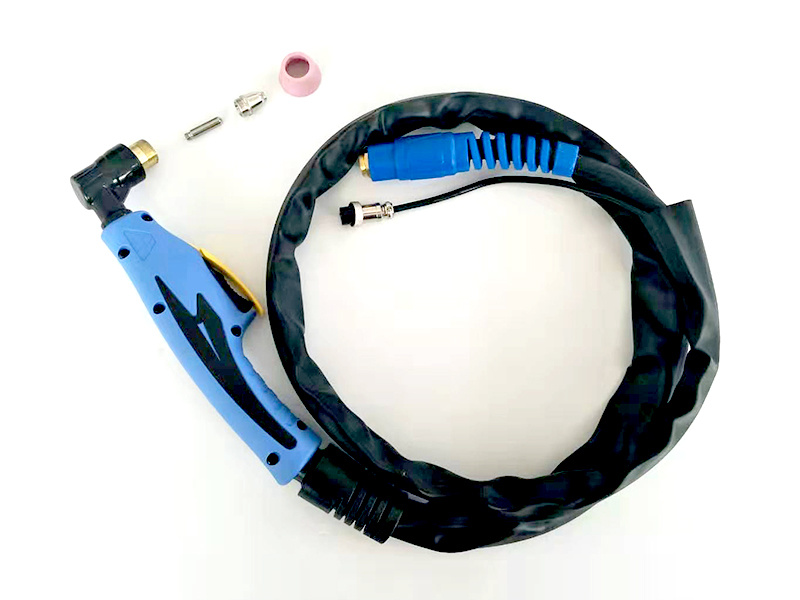language
Understanding the Intricate Relationship Between Wire Feeders and Heat Input in Welding Processes
May 17,2025
Understanding the Intricate Relationship Between Wire Feeders and Heat Input in Welding Processes
Welding is a fundamental manufacturing process that joins materials, predominantly metals, through the application of heat. Among the various components that play a crucial role in welding, wire feeders and heat input stand out as critical factors influencing the quality and efficiency of the weld. In
Understanding the Intricate Relationship Between Wire Feeders and Heat Input in Welding Processes
Welding is a fundamental manufacturing process that joins materials, predominantly metals, through the application of heat. Among the various components that play a crucial role in welding, wire feeders and heat input stand out as critical factors influencing the quality and efficiency of the weld. In this article, we will explore the intricate relationship between **wire feeders** and **heat input**, providing you with insights and techniques to optimize your welding operations.
Table of Contents
1. Introduction to Welding Fundamentals
2. The Role of Wire Feeders in Welding
- 2.1 Types of Wire Feeders
- 2.2 Wire Feed Speed and Its Importance
3. Understanding Heat Input in Welding
- 3.1 Defining Heat Input
- 3.2 Calculating Heat Input
4. How Wire Feeders Affect Heat Input
- 4.1 Velocity and Heat Transfer
- 4.2 Wire Composition and Its Impact on Heat
5. Optimizing Wire Feeders for Improved Heat Management
- 5.1 Adjusting Wire Feed Speed
- 5.2 Selecting the Right Wire Type
6. Common Challenges and Solutions
7. Future Trends in Welding Technology
8. FAQs about Wire Feeders and Heat Input
9. Conclusion
Introduction to Welding Fundamentals
To understand the relationship between wire feeders and heat input, it is essential to first grasp the basic principles of welding. Welding involves melting and fusing materials together, typically metals, using a heat source. Various welding techniques exist, including MIG (Metal Inert Gas), TIG (Tungsten Inert Gas), and stick welding, each utilizing different methods of heat application.
As we dive deeper into the components of welding, we’ll see how wire feeders are pivotal in maintaining a consistent and efficient welding process. The proper functioning of wire feeders directly influences the heat input, which is crucial for achieving high-quality welds.
The Role of Wire Feeders in Welding
Wire feeders are devices that supply the welding wire to the welding arc. They ensure a steady flow of wire, which is essential for maintaining the welding process and achieving optimal results. Understanding how wire feeders work is fundamental for any welding professional.
Types of Wire Feeders
Wire feeders come in various designs, including:
- **Constant Speed Feeders**: These deliver wire at a steady speed regardless of the welding voltage.
- **Variable Speed Feeders**: These allow for adjustments in wire feed speed, giving welders the flexibility to adapt to different materials and thicknesses.
Choosing the right type of wire feeder is crucial for achieving the desired heat input and overall weld quality.
Wire Feed Speed and Its Importance
The wire feed speed (WFS) is a critical parameter that directly influences the heat input. A higher WFS results in a higher deposition rate of the filler material, which increases the amount of heat input into the weld pool. Conversely, a lower WFS may lead to insufficient fusion and weak welds.
The relationship between wire feed speed and heat input is complex and requires careful calibration to achieve the best results.
Understanding Heat Input in Welding
Heat input is a crucial concept in welding that refers to the amount of heat energy supplied to the workpieces during the welding process. It is a significant factor influencing the characteristics of the weld.
Defining Heat Input
Heat input can be defined as the total energy applied per unit length of the weld. It affects various aspects of the weld, including penetration, ductility, and the overall mechanical properties of the joint. A proper balance of heat input is essential to avoid issues such as warping or distortion of the workpieces.
Calculating Heat Input
Heat input can be calculated using the formula:
**Heat Input (kJ/in) = (Voltage x Current) / Wire Feed Speed**
This equation highlights the interconnectedness of voltage, current, and wire feed speed, illustrating how each component influences the overall heat input during the welding process.
How Wire Feeders Affect Heat Input
The relationship between wire feeders and heat input can be observed through various factors, including velocity and wire composition. Understanding these factors is crucial for optimizing welding operations.
Velocity and Heat Transfer
The velocity at which the wire is fed into the welding arc affects the amount of heat transferred to the base metal. A faster wire feed may result in a cooler weld pool, while a slower feed can lead to excessive heat input, which may compromise the integrity of the weld.
Wire Composition and Its Impact on Heat
Different types of welding wires have varying compositions that influence their melting properties and heat absorption. For example, solid wires typically require different heat inputs compared to flux-cored wires. Understanding the specific requirements of the wire being used is essential for achieving optimal heat input.
Optimizing Wire Feeders for Improved Heat Management
To achieve superior weld quality, it is essential to optimize wire feeders and manage heat input effectively. Here are some techniques to improve performance.
Adjusting Wire Feed Speed
Fine-tuning the wire feed speed is one of the most effective ways to control heat input. A welder should experiment with various feed speeds to determine the best setting for the specific materials and thicknesses being used. Finding the right balance can lead to improved penetration and a more consistent weld bead.
Selecting the Right Wire Type
Choosing the appropriate wire type based on the welding application can significantly affect heat input and overall weld quality. Factors such as wire diameter, composition, and coating should be considered to ensure compatibility with the base materials being welded.
Common Challenges and Solutions
Welding professionals often face challenges related to wire feeders and heat input. Some common issues include:
- **Inconsistent Wire Feed Rates**: This can lead to burn-through or insufficient penetration. Regular maintenance and calibration of the wire feeder can mitigate this problem.
- **Overheating**: Excessive heat input can cause warping or distortion. Monitoring and adjusting heat input parameters can help avoid these issues.
Implementing best practices for wire feeder operation will help welding professionals overcome these common challenges.
Future Trends in Welding Technology
As technology continues to advance, the welding industry is seeing innovative developments in wire feeding systems and heat management. Automation and robotics are becoming increasingly prevalent, enabling more precise control over wire feed rates and heat input.
Furthermore, advancements in welding materials are leading to the development of wire compositions that require less heat, thus improving the overall efficiency of the welding process.
FAQs about Wire Feeders and Heat Input
1. What is the ideal wire feed speed for MIG welding?
The ideal wire feed speed generally ranges between 200 to 600 inches per minute, depending on the process parameters and material thickness.
2. How does voltage affect heat input?
Higher voltage increases heat input, resulting in deeper penetration and a wider weld bead, but it may also lead to excessive heat if not controlled properly.
3. Can I use the same wire feeder for different welding processes?
While some wire feeders are versatile, it is crucial to select the appropriate feeder based on the specific welding process and wire type to ensure optimal performance.
4. What are the signs of overheating during welding?
Signs include burn-through, excessive spatter, and warping of the workpieces. Monitoring heat input is essential to prevent these issues.
5. How can I improve my welding technique?
Experimenting with wire feed speed, adjusting heat input, and using proper techniques for specific materials can significantly improve welding quality.
Conclusion
In summary, the relationship between wire feeders and heat input is crucial in achieving high-quality welds. Understanding how to optimize wire feed speed, select the appropriate wire type, and manage heat input effectively can lead to enhanced performance in welding operations. As technology continues to evolve, staying informed about new developments and best practices will ensure that welding professionals remain competitive and produce superior results. Embracing these principles will not only improve the quality of welds but also increase overall efficiency and productivity in the welding industry.
Add
Xing village, lvgongbao town, renqiu city, hebei province, china









